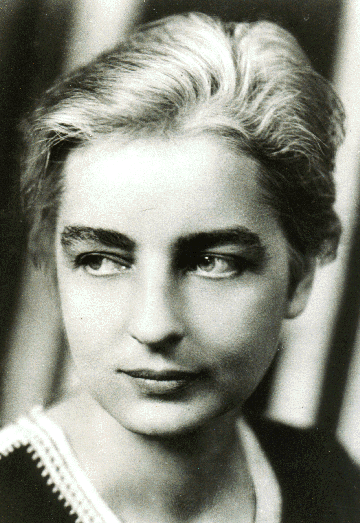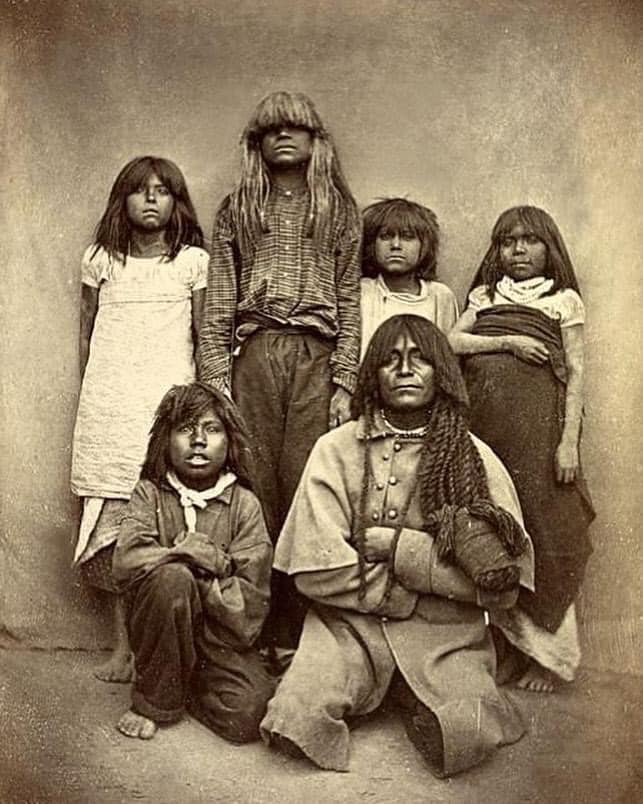エドワード・サピアとルース・ベネディクト
Edward Sapir (1884-1939) and Ruth Fulton Benedict (1887-1948)
| Edward
Sapir
(1884-1939) |
Ruth
Fulton
Benedict, 1887-1948 |
|
1884 ドイツ、ポメ ラニア州ローエンブルグのユダヤ人 家族(父親はラビ)に生まれる(1月26日) 1889 アメリカへ移 住、ニューヨークで少年時代をおく る 1900 コロンビア大 学入学(16歳) 1904 コロンビア大 学卒業、大学院に進学し、ゲルマン 語とセム語を専攻(同時期フランツ・ボアズに師事) 1905 初の調査旅 行、ウィシュラム・インディアンの言 語調査、ゲルマン語研究で修士号 1906 UCバーク レー校に新設された人類学部に助手と して赴任、この頃オレゴン州タケルマ・インディアン研究(タケルマ語文法は博士論文となる) 1908 バークレーで テニュアが得られずペンシルバニア 大学フェロー、パイウート語研究 1909 ペンシルバニ ア大学人類学部講師、博士号(コロ ンビア大学) 1910 カナダ国立博 物館地質調査部に人類学課主任、オ タワ在住(〜1925)、フローレンス・デルソンと結婚 1921 『言語 ――ことばの研究入門』出版(37 歳) 1924 フローレ ンス死亡 Culture, Genuine and Spurious, 1924 Racial Superiority, 1924
1925 シカゴ大学人 類学部准教授 1926 ジーン・マク レナガンと結婚 1927 シカゴ大学教 授 The Unconscious Patterning of Behavior in Society, 1927
1931 イエール大学 人類学部学部長。国立研究協議会・ 心理学・人類学部門議長「パーソナリティと文化に関する委員会」 1932 「文化がパー ソナリティにおよぼす影響につい て」国際セミナー Cultural Anthropology and Psychiatry, 1932 1933 アメリカ言語 学会会長 1934 アメリカ学士 院会員 The Emergence of the Concept of Personality in a Study of Culture, 1934 Personality, in Encyclopedia of Social Science ,1934 1937 持病の心臓病 悪化 The Contribution of Psychiatry to an Understanding of Behavior in Society, 1937 1938 アメリカ人類 学会会長 1939 心臓病で死亡
(2月4日、享年55歳)
|
1887.06.05
ニューヨーク州シ
ナンゴ・ヴァレーで生まれる。はしかにより片耳(どち ら?)の聴力を失う。 1889 前年に術中感染症に罹った外科医の父フレデリック・フルトンが死亡(3月26日)。 1894 母ベアトリスが高校教員に赴任(ミズーリ州セントジョセフ) 1896 ミネソタ州オトワンナに転居。 1897-1902 フランツ・ボアズ、ジェサップ北太平洋調査 1898 ニューヨーク州バッファローに転居。癇癪の最後の発作がおこる、その後、憂鬱症の傾向 が習慣化。 1902 セントマーガレット女学校入学 1905 ヴァッサー大学入学、英文学専攻。 1909 同大学卒業。10年まで奨学金でヨーロッパ旅行。 1910 ニューヨーク州バッファローの慈善事業協会(CSO)に勤務。 1911 ロサンゼルス、パサデナで国語教師(〜1914年)1913年からスタンレー・ベネ ディクトと恋愛関係に。 1914 生化学者スタンレー・ベネディクト(〜1936)と結婚。(スタンレーは第一次大戦期 に毒ガスの研究に従事し、後年後遺症に悩まされる)。小説などの創作に打ち込む。不妊症の傾向があることが判明。 1917 伝記『メアリー・ウルストンクラフト』を脱稿(41年後公刊)。当時、米国は第一次大 戦に参戦。 1918-1919 コロンビア大学でジョン・デューイによる哲学の授業を受け、感銘を受ける。デューイはNew School for Social Research の開校に関わる。 "No man ever looks at the world with pristine eyes. He sees it edited by a definite set of customs and institutions and ways of thinking. Even in his philosophical probings he cannot go behind these stereotypes; his very concepts of the true and the false will still have reference to his particular traditional customs. John Dewey has said in all seriousness that the part played by custom in shaping the behaviour of the individual as over against any way in which he can affect traditional custom, is as the proportion of the total vocabulary of his mother tongue over against those words of his own baby 'talk that are taken up into the vernacular' of his family." (Benedict, Patterns of Culture, 1934:2). 1919 ニュースクール・ フォ・ソーシャル・リサーチ(大学院)が開校する。そこでの聴講(〜21):エルシー・ パーソンズ(Elsie Clews Parsons, 1875-1941)の授業「民族学における性」、アレキサンダー・ゴールデンワイザー(Goldenweiser, Alexander A. 1880-1940)の授業「文明の基礎」をうける。 アレクサンダー・ゴールデンワイザーならびにエルシー・クルーズ・パーソンズの授業を受け る。 1921 34歳。コロンビア大学博士課程に入学。9か月で博士論文「北米における守護霊の観 念」を審査のために提出(学位取得は23年)。 1922 バーナードカレッジで、フランツ・ ボアズの助手。マーガレット・ミードと知り合う。処女論文「平原文化における幻 視」。夏にセラノ先住民を調査(〜26年)。 1923 学位論文「北アメリカにおける守護霊の概念」。コロンビア大学で1年ごとの講師契約。 The concept of the guardian spirit in North America / by Ruth Fulton B enedict. -- Kraus Reprint, 1964. -- (Memoirs of the American anthropol ogical association ; no. 29, 1923) 1924 ズニ調査。セリグマン「人類学と精神分析」論文(ca.) 1925 ズニとコチティの調査。Journal of Amrican Folklore の編集(〜1939)。 1926-27 バーナードでも教鞭。 1926年 マリノフスキーと出会う:「彼(マリノフスキー)は鋭い想像力と、七日間喜びを もたらす、遊びの心をもっている」(カフリー 1993:214) 1927 O'odham creation and related events / as told to Ruth Benedict in 1927 in prose, oratory, and song by the Pimas William Blackwater ... [et al.] ; edited by Donald Bahr ; :cloth. -- University of Arizona Press, 2001. -- (The Southwest Center series) 1926 マリノフスキー、コロンビア大学に現る。ローマでのアメリカニスト国際会議に参加。 1927 ピマ調査(プエブロとプレーンの対照性について気づくといわれる[→文化の諸パターン]) 1928 エドワード・サピアと ともに詩(アン・シングルトンのペンネーム)の原稿を出版社に送るが没となる。ニューヨークでアメリカニスト国際会議開催。 1930 論文「南西部諸文化における心理学的タイプ」「北アメリカにおける文化の統合形態」 1931 スタンレーと離婚。メスカレロ・アパッチ調査。コロンビア大学助教授(〜1937): Benedict, Ruth. 1931. Tales of the Cochiti Indians. Bureau of American Ethnology 1932 アルフレッド・クローバーがコロンビアに招聘され教鞭をとる。ベネディクト「文化の 型」の出版の構想を決意。 Configurations of culture in North America / by Ruth Benedict. -- [s.n .], 1932 1933 「呪術」(『社会科学事典』) 1934 『文化の型』 (Patterns of Culture)/Patterns of culture / Ruth Benedict. -- Houghton Mifflin, 1934 Benedict, Ruth "Anthropology and the Abnormal," Journal of General Psychology, 10, 1934.(このタイトルで検索するとpdfダウンロード可能) 1935 『ズニの神話』を刊行 Zuni mythology / by Ruth Benedict ; pt. 1, pt. 2. -- Columbia Universi ty Press, 1935. -- (Columbia University contributions to anthropology ; v. 21) 1936 ボアズ、コロンビア大学を退職。 1937 ベネディクト、コロンビア大学准教授 1938 ボアズ編『総合人類学(General Anthropology)』に宗教の章を寄稿 1939 ブラックフット(モンタナ州、カナダ・アルバータ州)調査。国民道徳委員会(ベイトソ ンやミードがいた) 1940 『人種:科学と政治』Race : science and politics / by Ruth Benedict. -- Rev. ed., with The races of mankind, by Ruth Benedict and Gene Weltfish. -- Viking Press, 1945[1940](→「人種」) 1941 食習慣委員会委員に任命。ベイトソン、ミードら、通文化関連協議会(後の通文化研究 所)を組織。 1942 Race and racism / Ruth Benedict. -- G. Routledge, 1942 1943 冊子「人類の諸人種」 The races of mankind / by Ruth Benedict and Gene Weltfish. -- rev. ed. . -- Public Affairs Committee, 1946[1943]. -- (Public affairs pamphlet ; no. 85) 1945 研究休暇中に「菊と刀」執筆 1946 『菊と刀』公刊。コロンビア大学に復帰。全米女性大学人協会の年間功労賞受賞。コロン ビア大学の同僚リントンの後任としてJ・スチュアードが赴任。 The chrysanthemum and the sword : patterns of Japanese culture / by Ru th Benedict. -- Houghton Mifflin, 1946 1946-47 アメリカ人類学会会長 1948 コロンビア大学教授に昇進。9月17日に死去。 Race and cultural relations : America's answer to the myth of a master race / analysis by Ruth Benedict ; teaching aids by Mildred Ellis. -- Rev. [ed.]. -- National Council for the Social Studies, National Asso ciation of Secondary-School Principals, Departments of the National Ed ucation Association, 1949. -- (Problems in American life ; unit no. 5) 1959 『人類学者の研究生活(An Anthropologist at Work)』公刊:Benedict, Ruth. 1959. An Anthropologist at Work: Writings of Ruth Benedict. Ed. Margaret Mead. Boston: Houghton Mifflin Company.  ルース・フルトン・ベネディ
クト ルース・フルトン・ベネディ
クト |
| Alexander Aleksandrovich
Goldenweiser (February 10 [O.S. January 29] 1880 – July 6, 1940) was a
Russian-born U.S. anthropologist and sociologist.[1] Biography Alexander Alexandrovich Goldenweiser was born in Kiev, Ukraine, in 1880. He emigrated to the United States in 1900.[1] He studied anthropology under Franz Boas, and earned his AB degree from Columbia University in 1902, his AM degree in 1904, and his Ph.D. in 1910.[2] In addition to many books, articles, and reviews, Goldenweiser taught at the following institutions: Lecturer, Anthropology, Columbia University, 1910–1919; New School for Social Research, NY, 1919–1926; Lecturer, Rand School of Social Science, 1915–1929; Professor, Thought and Culture, Oregon State System of Higher Education, Portland Extension, 1930–1938; Visiting professor, University of Wisconsin–Madison, 1937–1938; Professor, University of Washington, 1923; Visiting professor of sociology, Reed College, 1933–1939.[3] Among his other contributions, Goldenweiser introduced the term "involution" to social sciences research.[4] It was applied by Clifford Geertz in his Agricultural Involution. He died on July 6, 1940, in Portland, Oregon.[5] Works Totemism; An analytical study, 1910 Early civilization, An Introduction to Anthropology, 1922 Robots or Gods, 1931 Anthropology, An Introduction to Primitive Culture, 1937 History, psychology and culture, 1937 |
アレクサンダー・アレクサンドロヴィチ・ゴールデンワイザー(1880年2月10日(旧暦1月29日) - 1940年7月6日)は、ロシア生まれの米国の文化人類学者、社会学者である。 経歴 アレクサンダー・アレクサンドロヴィチ・ゴールデンワイザーは1880年にウクライナのキエフで生まれた。1900年に米国に移住した。[1] フランツ・ボアズのもとで人類学を学び、1902年にコロンビア大学で学士号、1904年に修士号、1910年に博士号を取得した。[2] 数多くの書籍、論文、評論に加え、ゴールデンワイザーは以下の機関で教鞭をとった。講師、人類学、コロンビア大学、1910年~1919年、ニュー・ス クール・フォー・ソーシャル・リサーチ、ニューヨーク、1919年~1926年、講師、ランド・スクール・オブ・ソーシャル・サイエンス、1915年 ~1929年、教授、思想と文化、オレゴン州立高等教育システム 、1930年~1938年、オレゴン州立高等教育システム、ポートランド・エクステンション、思想と文化担当教授、1937年~1938年、ウィスコンシ ン大学マディソン校客員教授、1923年、ワシントン大学教授、1933年~1939年、リード大学社会学客員教授。 ゴールデンワイザーは、社会科学の研究に「involution(内旋)」という用語を導入した。これは、クリフォード・ギアツが著書『農業の内旋(インボリューション)』で応用した。 彼は1940年7月6日、オレゴン州ポートランドで死去した。 著作 トーテミズム:分析的研究、1910年 初期文明:人類学入門、1922年 ロボットか神か、1931年 人類学:原始文化入門、1937年 歴史・心理学・文化、1937年 |
| https://en.wikipedia.org/wiki/Alexander_Goldenweiser_(anthropologist) |

Llamados por primera vez los Pima por los
exploradores españoles en el siglo XVII, se llamaron a sí mismos
"Akimel O'odham", que significa Pueblo del Río. Los pueblos piman, que
viven en la región del desierto de Sonora, son descendientes de la
cultura prehistórica Hohokam.
foto: Indios Pima por Carlo Gentile, 1870.
リンク
文献
その他の情報
Copyleft, CC, Mitzub'ixi Quq Chi'j, 1997-2099